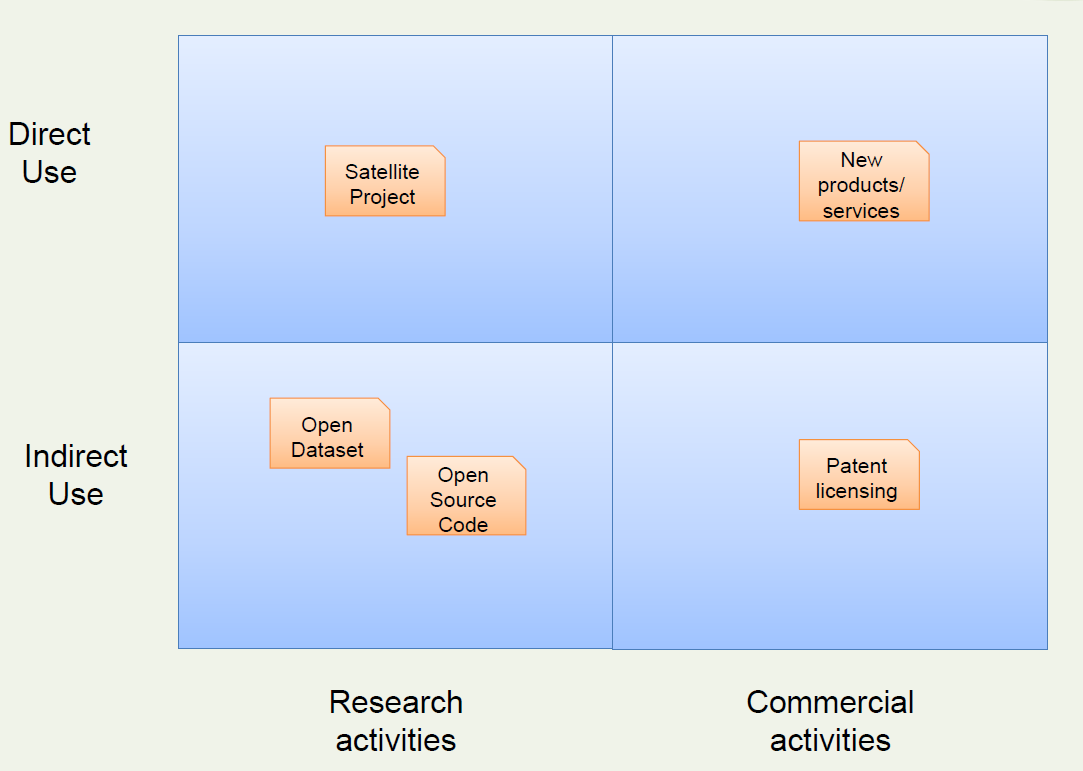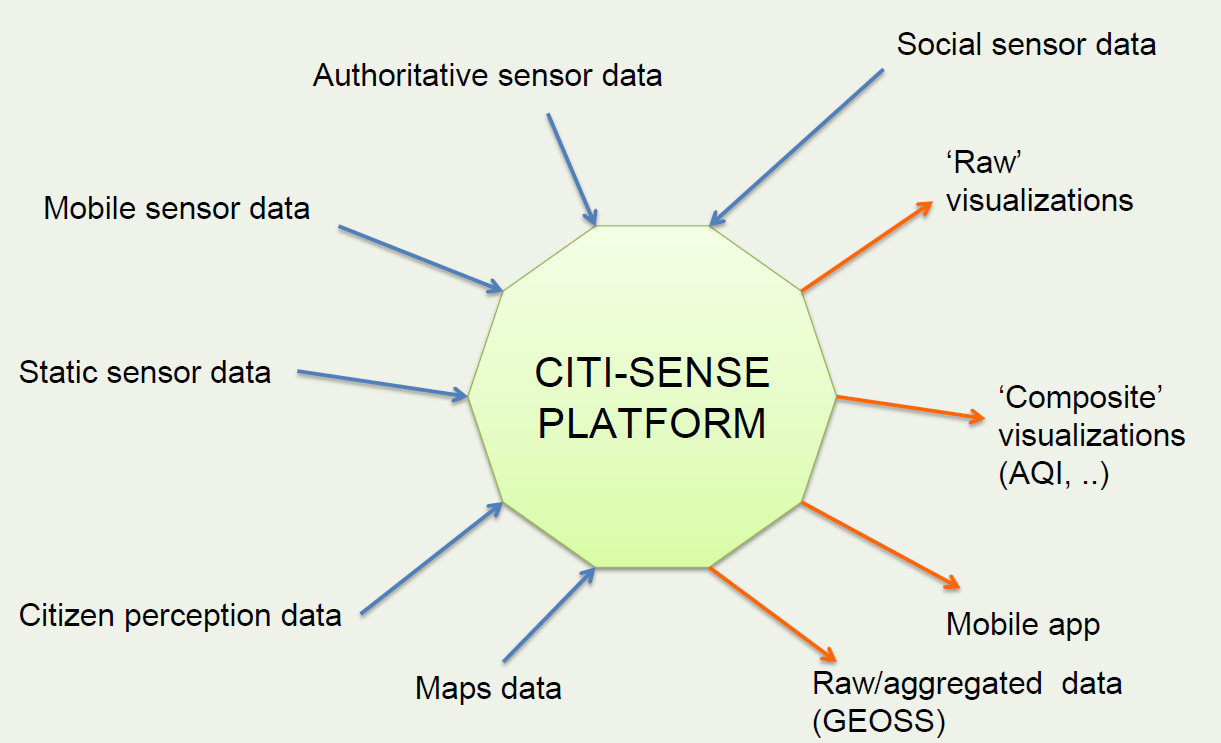What is exploitation?
R&D&I projects generate knowledge and intellectual property (IP)
EC wants to see how such knowledge and IP are exploited by the Consortium
-
Key aspect: maximize the project impacts afterthe end of the project
-
In line with FP7 co-funding principles: You put money, so you should have plans to have a return on investment
-
Dimensions: science, technology, economy and society

Figure 1. Exploitation quadrant.
How to do exploitation in CITI-SENSE?
Exploitation plan
To define a strategy for the exploitation of knowledge and intellectual property (IP) generated within the framework of the CITI-SENSE project
- Supporting partners in their own exploitation activities
- Coordinating (project-wise) partner-level strategies
Exploitable knowledge qualification (‘ranking’)
-
26 items initially identified – Set of cards with details available here
-
16 items selected, find it here, and mapping to quadrant as following

-
Filter – we focus only on those with potential impact on commercial activities (8, find it here): Right hand side of the quadrant
-
Scoring and ranking approach as follows: 1) High-level approach: BDFL (benevolent-dictator-for-life); 2) 7 dimensions identified, each one with a weight; 3) Score 1-5 for each dimension; 4) Ranking based on weighted sum
-
Scoring and ranking criteria, find it here
-
Scoring and ranking results as following

Business Models: What/Who/How/When
The following innovations are candidates for development of a business model
1) Personal sensor pack (Ateknea – Leonardo)
2) CityAirapp (NILU – Mirjam)
3) Spatial and environmental data services platform (Snowflake – Richards/Rosie)
Business model canvas
1) Describe how your innovation creates value, for whom and how this is delivered
2) And how it is monetized
CITI-SENSE PoPs
-
Sustaining COs across a number of use cases
-
Flexible enough to accommodate different contexts
-
Ready to be used by other smart cities across Europe and beyond

 Long-term sustainability of COs
Long-term sustainability of COs
1) What will happen to CITI-SENSE Citizens’ observatories/Empowerment initiatives after the end of the project?
2) How can they be sustained?
3) More in general, how can a CO/EI sustain its operations?
Financing COs, the following three potential models identified
-
Public administration/local government support
-
Charity
-
Crowdfunding
SMEs in the project
We have a large number of SMEs in the Consortium, and they benefitted from the project in various means
-
Technology maturation: from TRL-x to TRL-y
-
Technology experimentation: validating a product with end users
-
Innovation opportunity scouting: found new avenues (vertical, use case) for usage of existing product/service
Collect such data for the development of business model for CITI-SENSE products & services
-
CITI-SENSE is not just about single-partners innovation. We shall have a ‘product of products’ (PoPs), for